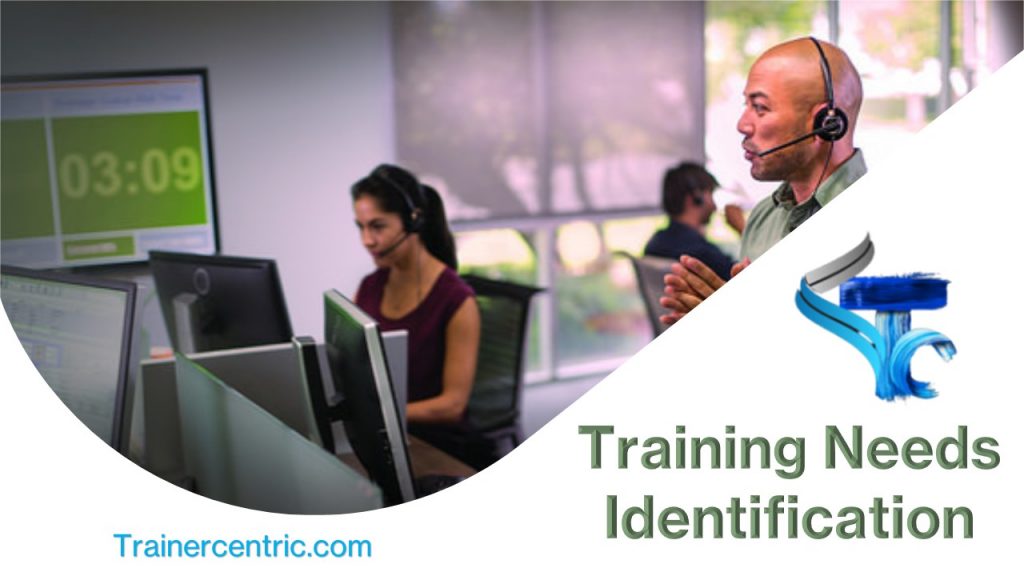
In the realm of corporate training, identifying the specific needs of employees is a crucial first step towards creating effective and targeted training programs. This comprehensive guide will walk you through the process of Training Needs Identification (TNI), offering valuable insights, step-by-step procedures, and essential tips.
Whether you are an experienced trainer or someone new to the field, this guide will equip you with the knowledge to understand the significance of TNI and how to implement it successfully.
Defining Training Needs Identification
Training needs identification can be best described as a comprehensive exploration of the operational facets of a job. This exploration sheds light on the skills, concepts, and attitudes required to improve performance within a specific job environment. The insights garnered through this analysis form the basis for identifying training gaps and subsequently crafting targeted training programs.
Understanding Training Needs Identification (TNI)
Training Needs Identification is the systematic approach of evaluating and analyzing the current proficiency levels of employees to determine the areas where additional training is necessary. It goes beyond a one-size-fits-all training strategy and instead aims to create tailored learning experiences that cater to the diverse needs of individuals within the organization.
TNI is more than just a checkbox in the training process; it is a strategic tool that can significantly impact an organization’s success. Here are some compelling reasons why TNI matters:
- Maximizing Training Investment: By pinpointing specific training needs, organizations can ensure that their training budget is allocated to the areas that will yield the most significant results, making it a cost-effective approach.
- Boosting Employee Engagement: When employees recognize that their employers are invested in their growth and development, it fosters a sense of loyalty and commitment, leading to increased engagement and reduced turnover.
- Enhancing Performance and Productivity: Addressing skill gaps and knowledge deficiencies through targeted training can lead to improved performance and overall productivity, benefiting both the individual and the organization.
- Tailored Learning Experiences: TNI helps in crafting personalized learning experiences that suit individual learning styles, ensuring that training resonates with employees and is better retained.
- Aligning Training with Organizational Goals: By understanding the training needs of employees, organizations can align training initiatives with their broader strategic objectives, creating a workforce that is better equipped to contribute to the company’s success.
Steps to Conduct Training Needs Identification
Step 1 – Establish Training Objectives: Start by defining clear and measurable training objectives. These objectives should align with the organization’s mission, vision, and long-term goals.
Step 2 – Gather Employee Input: Encourage employees to actively participate in the TNI process by providing their insights on their training requirements and areas they feel they need to improve. You can share a survey link using free tools like Survey Monkey or Google Forms.
Step 3: Analyze Job Roles: Conduct a comprehensive analysis of different job roles within the organization. Understand the specific skills, competencies, and knowledge required to perform each role effectively.
Step 4: Identifying Performance Gaps: Identifying performance gaps can be a challenging task for corporate trainers. Here is a step by step process to identify performance gaps among the employees:
Types of performance gap
- Lack of Product Knowledge: Employees need to be well-versed in the company’s products or services. A gap in product knowledge can lead to inaccurate information being provided to customers.
- Inadequate Communication Skills: Effective communication is the cornerstone of customer interactions. Poor communication can result in misunderstandings and customer frustration.
- Handling Difficult Customers: Some employees may struggle to handle irate or demanding customers, impacting the quality of service provided.
- Time Management Challenges: Call centre agents often work under time constraints. Inefficient time management can lead to rushed interactions and unresolved issues.
Methods to Identify Performance Gaps
- Call Monitoring and Quality Assessment
- Agent Self-Assessment
- Customer Feedback Analysis
- Performance Metrics Tracking
Regularly monitoring and assessing calls allows supervisors to identify areas where agents excel and areas that need improvement.

Call monitoring is one of the most useful ways to identify performance gap in the call centre agents.
Encouraging agents to reflect on their own performance helps them identify their strengths and weaknesses.

Analyzing customer feedback provides insights into recurring issues or concerns, highlighting areas for improvement.

Tracking metrics like average call duration and issue resolution rates offers quantitative data on agent performance.

Step 5: Conduct Skill Assessments: Utilize skill assessments and knowledge tests to evaluate the current proficiency levels of employees and identify any knowledge gaps.
Step 6: Prioritize Training Needs: Prioritize the identified training needs based on their urgency, importance, and alignment with the organization’s goals.
Step 7: Develop Tailored Training Programs: Design training programs that are tailored to address the specific needs of different employee groups or individuals.
Step 8: Implement and Evaluate: Implement the training programs and continuously evaluate their effectiveness through feedback, assessments, and performance metrics. Putting the training programs into action involves careful planning, scheduling, and resource allocation. It’s important to create a conducive learning environment.
Step 9: Iterate and Improve: Use the feedback gathered during and after training to make necessary improvements and iterate on the training programs for continuous enhancement.
Strategies for Successful Training Needs Identification
Strategy 1: Utilizing Data Analytics
Data analytics, the practice of analyzing and interpreting data to gain insights, is revolutionizing various aspects of business management. When it comes to training needs identification, data analytics plays a pivotal role in ensuring a more objective and accurate assessment of an organization’s workforce.
By collecting and analyzing data on employee performance, skill development, and job roles, companies can identify patterns and trends that highlight areas of improvement.
Through data analytics, performance metrics such as productivity rates, error rates, and completion times can be evaluated. Comparing these metrics across teams or individuals can unveil discrepancies and skill gaps that may not have been apparent otherwise.
Strategy 2: Involving Employees in the Process
In the realm of workforce development, employees are not just the recipients of training; they are valuable stakeholders who possess insights that can shape effective training strategies. Involving employees in the training needs identification process is not only a smart approach but also a respectful recognition of their expertise and perspectives.
Employees are on the front lines of daily operations, making them well-acquainted with the challenges they face. By soliciting their input, organizations can gain a deeper understanding of skill gaps and training needs identification from those directly experiencing them.
When employees have a say in their training needs, the resulting programs are more likely to be relevant and impactful. This ensures that training is focused on addressing actual challenges encountered in daily tasks; therefore sharpening the training needs identification process.
Strategy 3: Aligning Training Needs Identification with Future Growth
As the business landscape continues to evolve at a rapid pace, organizations must not only address their current training needs but also anticipate the skills required for future success. Aligning training needs identification with future growth is a strategic approach that ensures businesses remain adaptable, competitive, and well-prepared for upcoming challenges.
Industries are shaped by emerging trends and technological advancements. By analyzing market trends and staying informed about industry shifts, organizations can identify the skills that will be in demand in the future.
Innovation is a driving force behind growth. Training programs should encourage employees to think creatively, solve complex problems, and contribute to innovation initiatives that propel the organization forward.
As organizations grow, the need for effective leadership becomes more pronounced. Training needs identification should encompass leadership development to ensure a pipeline of capable leaders who can guide the company’s expansion.
Navigating Challenges in Creating Training Needs Identification
While the process of training needs identification is crucial for workforce development, it’s not without its challenges. Organizations must be aware of and prepared to address these challenges to ensure the effectiveness of their training initiatives. Here are a few common challenges that you might face while creating training needs identification.
1. Subjectivity in Assessment
Challenge: Assessing skills can be subjective, leading to biases and inaccuracies in identifying actual training needs.
Solution: Implement a mix of evaluation methods, involve multiple stakeholders, and use data analytics to provide a more objective view of skill gaps.
2. Limited Resources
Challenge: Allocating resources such as time, budget, and personnel for training can be challenging, especially for smaller organizations.
Solution: Prioritize training needs based on potential impact and consider cost-effective training methods such as e-learning or peer mentoring.
3. Measuring Training Effectiveness
Challenge: Determining the impact of training on employee performance and productivity can be complex.
Solution: Define clear metrics to measure the success of training programs, such as improved productivity rates, reduced error rates, or increased customer satisfaction.
4. Resistance to Change
Challenge: Employees may resist training due to fear of change, disruption to daily tasks, or lack of perceived relevance.
Solution: Communicate the benefits of training, address concerns transparently, and involve employees in the training needs identification process to increase buy-in.
5. Lack of Data Availability
Challenge: Inadequate data on employee performance and skills can hinder accurate identification of training needs.
Solution: Invest in systems that track employee performance and skills over time, and encourage regular self-assessment and feedback.
6. Adapting to Technological Changes
Challenge: The rapid pace of technological advancements requires organizations to constantly update their training strategies.
Solution: Implement a culture of continuous learning to ensure employees stay up-to-date with new technologies and tools.
7. One-Size-Fits-All Approach
Challenge: Applying the same training approach to all employees may not address individualized skill gaps.
Solution: Tailor training programs to individual needs through personalized learning paths based on data analytics and employee input.
8. Engaging Employees
Challenge: Keeping employees engaged in training can be a struggle, especially with busy schedules.
Solution: Design interactive and engaging training content, incorporate gamification elements, and emphasize the practical benefits of the training.
9. Changing Roles and Responsibilities
Challenge: As roles evolve, employees may require different skill sets than when they were hired.
Solution: Regularly reassess job roles and responsibilities, and update training programs accordingly to ensure alignment.
10. Measuring Soft Skills
Challenge: Soft skills like communication, teamwork, and leadership can be challenging to measure objectively.
Solution: Use a combination of self-assessments, peer evaluations, and performance feedback to gauge the development of soft skills.
Conclusion
Understanding Training Needs Identification is the key to unlocking the full potential of an organization’s workforce. By delving into the unique requirements of employees and designing tailored training programs, companies can foster a culture of learning and development that benefits both the individual employees and the overall organization.
Embrace the TNI (training needs identification) process as a strategic investment in your employees, and watch as they thrive and contribute to the success of your business.

![The Power of Storytelling in Corporate Training: Igniting Success and Inspiring Growth [2023]](https://trainercentric.com/wp-content/uploads/2023/06/storytelling-1024x576.jpg)

